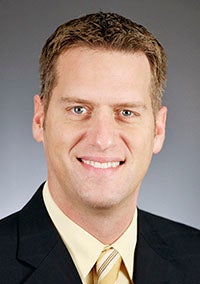House budget elevates tax cuts, squeezes health
Published 10:01 am Wednesday, March 25, 2015
ST. PAUL — Minnesota House Republicans said Tuesday they’ll strive for $2 billion in unspecified tax cuts in a budget that would squeeze spending, primarily on health and welfare programs but also in state government operation itself.
The GOP majority outlined broad targets to be filled in line-by-line over the next several weeks. The framework is essentially an opening bid toward upcoming negotiations with Democratic Gov. Mark Dayton and majority Senate Democrats, with a $1.87 billion projected budget surplus for the two years beginning July 1 as the backdrop. The GOP plan would hold the state’s two-year budget just under $40 billion, although that doesn’t count a special transportation account proposed Monday that relies on money being drawn from the general treasury.
House Speaker Kurt Daudt said a “guiding principle” is to slow down the growth of state government.
“Minnesotans expect us to be effective and efficient with every dollar we spend always — even when we have a surplus,” Daudt said.
Daudt said the tax-cut package will likely include an assortment of exemptions on Social Security income and veterans’ benefits as well as some breaks for businesses. He ruled out a rebate program that would send every taxpayer a check.
Overall, the Republican budget plan is roughly $3 billion slimmer than Dayton’s budget. Senate Democrats will issue a framework Friday.
Matt Swenson, Dayton’s spokesman, said the governor’s office is reviewing the Republican proposal.
House Minority Leader Paul Thissen, a Democrat, accused Republicans of using phony math and producing a “recipe for shutting government down” at a time of surplus. Minnesota endured partial shutdowns in 2005 and 2011 amid budget disputes.
The initial skirmish among budget negotiators could be over numbers. The GOP constructed its proposal off the $39.3 billion the state is on course to have spent in the two-year cycle that ends this June. Dayton worked upward from projections of how much it would cost to deliver the same services for the next two years, which would be $41.1 billion.
The GOP blueprint would devote 42 cents of every dollar to education initiatives for children in preschool through high school. Lawmakers said they would feed an extra $160 million to nursing homes and long-term care aides who tend to the elderly and disabled. Property tax relief programs and local government allowances would also see more.
But the plan would shave more than $1.1 billion from projected spending growth in subsidized health and welfare programs. It contains more money for colleges, but Republican House Ways and Means Chairman Jim Knoblach said it wouldn’t supply enough to continue an undergraduate tuition freeze at all public universities.
On health care, Knoblach said “hundreds of millions of dollars” could be recouped by weeding out enrollees on the state’s public health plans that aren’t actually eligible for Medical Assistance, MinnesotaCare and other programs.
The Office of the Legislative Auditor found that 17 percent of the 193 recipients it studied were improperly enrolled in a public health program. Some should have been placed in a different program, while others shouldn’t have gotten assistance at all.
Rep. Matt Dean, the Dellwood Republican charged with piecing together the House’s health and human services budget, said his proposal to scrap MinnesotaCare — and move the estimated 95,000 to the state’s health insurance exchange — will also be on the table.
Senate Majority Leader Tom Bakk, DFL-Cook, issued an ominous warning to Republicans about going after MinnesotaCare, noting that Democrats went to a shutdown in 2005 to protect the state’s program for the working poor.
“We don’t plan to dismantle MinnesotaCare this year either,” Bakk said.
Thissen said the proposed health spending ignores real costs based on the rising expense of providing care to everyone who is eligible.
“They may claim it’s just growth in the budget,” Thissen said, “but to the diabetic who was getting diabetic strips, to the person with mental health needs who was getting services and now won’t get those services, those are real cuts in their lives.”






